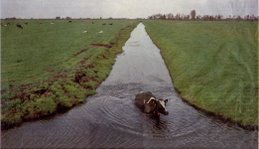Liverpool. Liverpool!
Beatles and Soccer. Such interesting people at the University and so close to Manchester (but never mention that here! It is like mentioning Amsterdam in Rotterdam, Hamburg in Bremen, Nancy in Metz).
Loony Left in Toxteth neighbourhood. As close as London comes to the Atlantic. Former Slave traders at the shores of the Irish Sea. Welsh to the left, Scots to the right, Irish in front and London in the back.
Yesterday night arrival at John Lennon Airport. Taxi to hotel (photo).
I do not complain about the hotel. It is the best you can get on my budget, if you want to stay close to the Convention Centre where the URBACT conference starts tomorrow. It has decent, but minimal, accommodation for both its target groups: families and commercial representatives.
I guess, I am of the latter category. Somewhat lost among the weekend enjoying families. The families, couples, wedding guests and I – we are located in the City Centre, near the old sea-port. At some distance, I see some roofs and towers of intact commercial, financial and cultural palaces, dating from about a century ago.
On the foreground: this typical post-modern waterfront redevelopment landscape that came into being during the eighties and the nineties of last century. Characteristics:
- Most of small constructions (houses, small workplaces, shops) razed, only the narrowness of roads and their winding remembering them;
- Bigger constructions, like nineteenth century warehouses, with their brownstone facades renovated and transformed into flats, small enterprise-breeding centres, or, like the location of tomorrow’s URBACT Conference, hotels or convention centres;
- Relation with the harbours and de waterfront is often tiny or non-existent;
- New constructions are in concrete and metal and do not relate to the remnants of the original urbanisation (car parking – see photo).
To the individual pedestrian visitor (me), this always feels uneasy. Every moment fearing to get lost.

At the same time, I feel relieved, when I recall the utter depravity of these locations, when I visited them 20 or 30 years ago. Rats had taken over the valley of port installations in Glasgow, the London Docklands resembled a third world country and everywhere in Europe, abandoned waterfront warehouses had become places of marginal, an very often illicit activities, surrounded by dangerous wastelands. Amsterdam, Genoa, Lisbon, Dublin, Copenhagen, Hamburg, Bremen, Cadiz – to mention a few. It is –undoubtedly- much better now. Governments and local authorities have found ways to engage private initiative to bring about this transformation. Sometimes by means of heavy state- and semi-state investments (Bordeaux, Amsterdam, Bremen), sometimes by selling out the best parts to big international property investors (London Docklands).
What I regret, and what I see as a failure of us, social medics of deprived urban areas, is, that we have not been able to save, integrate and make sustainable, most of the creative, young and innovative economic and housing projects, founded by squatters of those abandoned buildings, mostly because of their scale, that did not correspond to the globalisation scales. But also, because of their low capital intensity (as they were in their beginnings) and their lacking, too often, of an integrative insertion into the social and economic life of the inhabitants of surrounding neighbourhoods.
We could have federated the self-managing waterfront initiatives on a European scale, exchange experiences, learn from each other and, maybe, get a specific EU funding. We could have integrated them as a principal participant into the local Development Societies (Enterprises) that came into being as ppp’s at the end of the eighties. It was to be expected, that within a market of quick-profit seeking capital, they would not survive. In the best cases they have been bought and have lost their innovative capacities. In the worst, they went under in the it-bubble, or were forcibly relocated. In the artificially created local development part of the market, where sustainability was (or was intended to be) a leading criterion, many more of them could have survived and grown.
Europe’s Waterfront areas like this one in Liverpool would have looked different, now. And we would be more advanced on the road to meeting the Lisbon objectives…





No comments:
Post a Comment